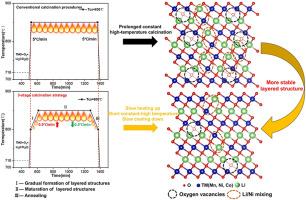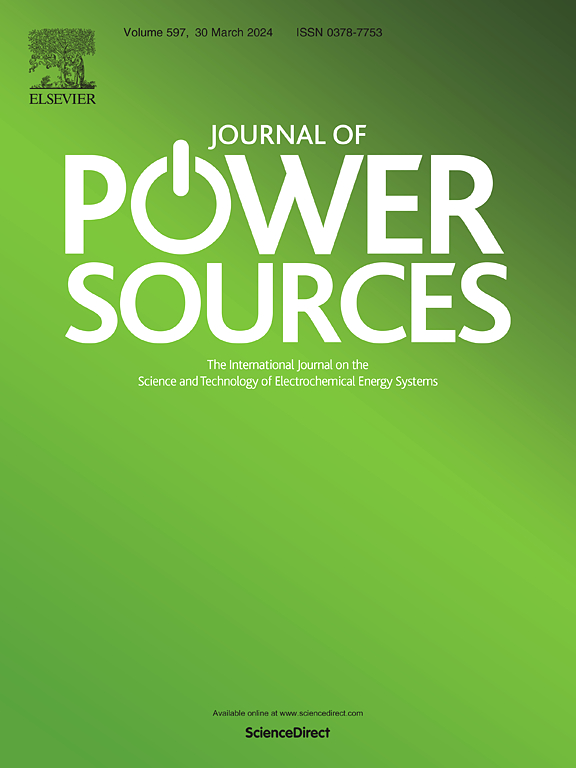Precisely designed 3-stage calcination strategy for lithium-rich manganese-based cathodes with improved cycling performance
IF 8.1
2区 工程技术
Q1 CHEMISTRY, PHYSICAL
引用次数: 0
Abstract
The poor cycling performance of Li-rich manganese-based (LMR) cathodes is one of the challenges that need to be urgently overcome. Enhancing the stability of the layered structure responsible for lithium-ion diffusion is an effective way to improve the cycling performance. Layered structures are mainly formed during the high-temperature solid-phase reaction, whereas the prolonged and constant-high-temperature calcination conditions in conventional calcination procedure may pose a threat to the layered structural stability. Thus, in order to optimize the formation environment of layered structures under high-temperature solid-phase reaction, we have designed suitable temperature-controlled strategies for each stage of layered structure formation, gradual maturation, and post-treatment, respectively, referred to as the 3-stage calcination strategy. This calcination strategy contributes to the formation of a more ordered and stable layered structure, which significantly improves the cycling performance of LMR cathodes (capacity retention rate of 85.2 % after 200 cycles at 1C). The shortening of the constant high temperature calcination time helps to further reduce the production cost of the batteries. The design concept of this work is to regulate the formation process of layered structures in stages, which provides inspiration for the efficient and controllable synthesis of electrode materials with excellent structural stability at low production cost.

针对富锂锰基正极精确设计的 3 级煅烧策略,可提高循环性能
富锂锰基(LMR)阴极的循环性能较差,这是亟待解决的难题之一。提高负责锂离子扩散的层状结构的稳定性是改善循环性能的有效方法。层状结构主要是在高温固相反应过程中形成的,而传统煅烧过程中长时间持续的高温煅烧条件可能会对层状结构的稳定性造成威胁。因此,为了优化层状结构在高温固相反应下的形成环境,我们针对层状结构形成、逐渐成熟和后处理的各个阶段分别设计了合适的温控策略,即三阶段煅烧策略。这种煅烧策略有助于形成更有序、更稳定的层状结构,从而显著提高 LMR 阴极的循环性能(在 1C 下循环 200 次后,容量保持率为 85.2%)。恒定高温煅烧时间的缩短有助于进一步降低电池的生产成本。这项工作的设计理念是分阶段调节层状结构的形成过程,这为以低生产成本高效、可控地合成具有优异结构稳定性的电极材料提供了灵感。
本文章由计算机程序翻译,如有差异,请以英文原文为准。
求助全文
约1分钟内获得全文
求助全文
来源期刊

Journal of Power Sources
工程技术-电化学
CiteScore
16.40
自引率
6.50%
发文量
1249
审稿时长
36 days
期刊介绍:
The Journal of Power Sources is a publication catering to researchers and technologists interested in various aspects of the science, technology, and applications of electrochemical power sources. It covers original research and reviews on primary and secondary batteries, fuel cells, supercapacitors, and photo-electrochemical cells.
Topics considered include the research, development and applications of nanomaterials and novel componentry for these devices. Examples of applications of these electrochemical power sources include:
• Portable electronics
• Electric and Hybrid Electric Vehicles
• Uninterruptible Power Supply (UPS) systems
• Storage of renewable energy
• Satellites and deep space probes
• Boats and ships, drones and aircrafts
• Wearable energy storage systems
 求助内容:
求助内容: 应助结果提醒方式:
应助结果提醒方式:


